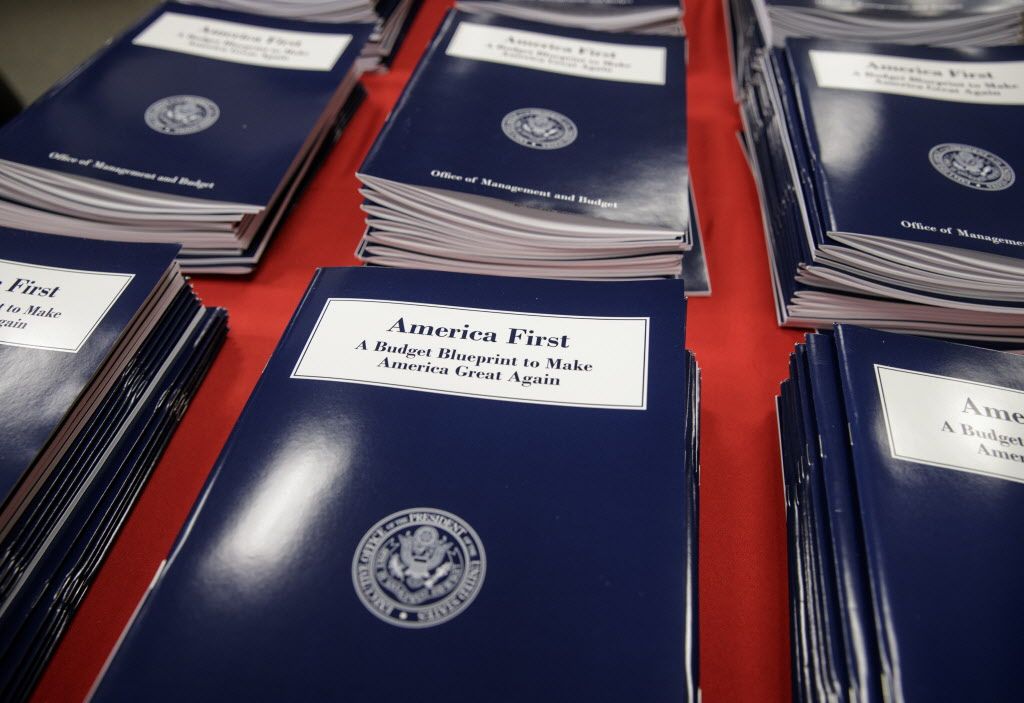US President Donald Trump has devised his first full budget since being elected as he seeks faster economic growth and steep cuts to programs supporting low-income individuals to balance the government’s books over the next decade.
Trump, who is traveling overseas and will miss the unveiling of his plan, wants lawmakers to cut $3.6 trillion in government spending over 10 years, balancing the budget by the end of the decade, according to a preview given to reporters on Monday.
The White House will ask Republicans who control the US Congress – and federal purse strings – to slash spending on healthcare and food assistance programs for the poor as they push ahead on plans to cut taxes and trim the deficit.
President Donald Trump is set to propose a raft of politically sensitive cuts for the fiscal year that starts in October, a proposal that some analysts expected would be put aside by lawmakers as they craft their own budget and spending plans.
More than $800 billion would be cut from the Medicaid program for the poor and more than $192 billion from food stamps.
Republicans are under pressure to deliver on promised tax cuts, the cornerstone of the Trump administration’s pro-business economic agenda, which would cut the business tax rate to 15 percent from 35 percent, and reduce the number of personal tax brackets to three from seven.
Trump’s biggest savings would come from cuts to the Medicaid program made as part of a Republican healthcare bill passed by the House of Representatives.
The bill aims to gut the Obama administration’s signature 2010 Affordable Care Act, known as Obamacare, that expanded insurance coverage and the government-run Medicaid program for the poor. But it faces an uncertain future in the Senate, which is writing its own law.
The White House proposed changes that would require more childless people receiving help from the Supplemental Nutrition Assistance Program, better known as food stamps, to work.
The plan would slash supports for farmers, impose user fees for meat inspection and sell off half the nation’s emergency oil stockpile. Another politically fraught item is a proposal for cuts to the US Postal Service, a goal that has long eluded lawmakers and administrations from both political parties.
The first look at the plan came in a “skinny budget” released in March – a document that received a tepid response from Congress.
Most departments would see steep cuts, particularly the State Department and the Environmental Protection Agency.
There is some new spending. The Pentagon would get a boost, and there would be a down payment to begin building a wall on the southern border with Mexico, which was a central promise of Trump’s presidential campaign.
The budget includes $25 billion for a plan to give parents six weeks of paid leave after the birth or adoption of a child, and $200 billion to encourage state and local governments to boost spending on roads, bridges, airports and other infrastructure programs.
The plan drew immediate fire from lobby groups, including from the Committee for a Responsible Federal Budget, which said it relied on “rosy assumptions,” gimmicks and unrealistic cuts.
“While we appreciate the administration’s focus on reducing the debt, when using more realistic assumptions, the president’s budget does not add up,” Maya MacGuineas, the group’s president, said in a statement.
Trump’s proposal projects that this year’s deficit will rise to $603 billion, up from the actual deficit of $585 billion last year. But the document says if Trump’s initiatives are adopted the deficit will start declining and actually reach a small surplus of $16 billion in 2027. However, that goal depends on growth projections that many private economists view as overly optimistic.
The government hasn’t run a surplus since the late 1990s when a budget deal between Democrat Bill Clinton and congressional Republicans combined with the longest US economic recovery in history produced four years of black ink from 1998 to 2001.
“The president believes that we must restore the greatness of our nation and reject the failed status quo that has left the American dream out of reach for too many families,” the administration said in its budget which was titled, “The New Foundation for American Greatness.”
